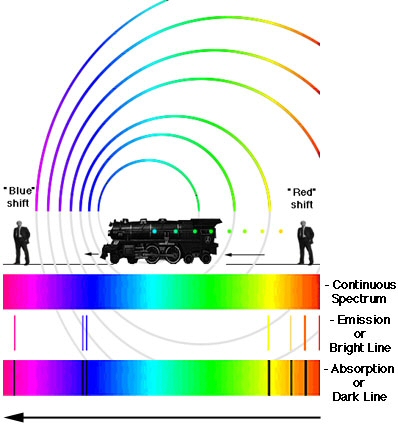In the case of the Doppler Effect for light waves the situation is a little bit different. It still maintains the same relationship as that for sound, only we need less information.
The reason being that light can travel through anything, including a vacuum. A vacuum in the scientific sense is a space where there is no matter. Examples of matter include air and water.
The Doppler Effect for light waves depends only on the relative speed between you and the police car. It doesn’t matter if you measure the relative speed or if the police car measures the relative speed as long as one of you does. Therefore let’s change the previous situation a little bit.
Let’s say it is night time. You are once again driving on the highway, but you notice that the police cars turned off their sirens and turned on their green lamp. As before when the slower police car passes you, you notice no colour change.
As the faster police car approaches you, you notice the light is blue. Furthermore as the police car moves away from you the colour of the light is red.
The Doppler Effect for light works on the same principle as the Doppler Effect for sound. Here the equivalent to pitch is colour and the equivalent to frequency is wavelength.
Thus just as in the case for sound, the light waves are compressed when the separation between the observer (you) and the object is small. This result is shorter wavelengths and the observed blue colour shift.
When the separation is larger the resulting wavelengths are longer and the red colour shift is observed. This is seen below in the animation, where the effect is best observed at the bottom of the frame.
The Doppler Effect is used by astronomers to gather information about how fast stars, galaxies and other astronomical objects move toward or away from Earth and help determine whether the universe is expanding.
When a light source moves towards you, its speed:
a. changes but its frequency (color) remains constant
b. remains constant, but its frequency (color) can change
c. stays the same, as does its frequency (color)


